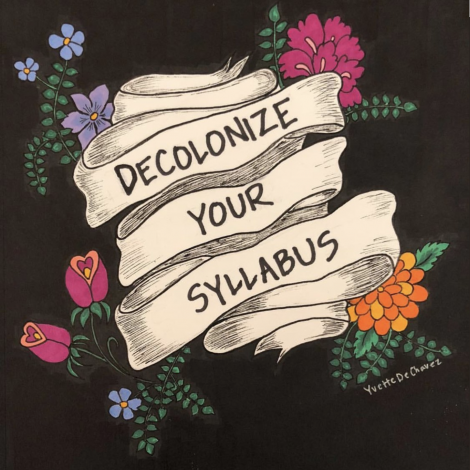This has to be my alllll-time favorite teaching method. There’s just something about it that gets students engaged in conversation, and they always get super animated in teaching their peers and giving detailed examples. With this method, groups of students each read a different section / chapter. They group together in class first with those who read the same thing as them and unpack the reading, and then they’re divided up to teach their peers in groups. This can be modified in lots of ways (students can read / prep in class, etc.), but we’ll start with a basic approach.
Becoming Better Notetakers
I remember early in my Ph.D. program I was frustrated with a dissertation chapter I was writing. I went with my intuition and produced a giant concept map of what I wanted to say. I finished the diagram with a sigh of relief — the chapter made sense now. But I still felt guilty like I was doing something wrong. Real writers didn’t use concept maps, right? I’m not sure anyone ever taught me how to take notes productively, certainly not after elementary/middle school, and I still struggle with notetaking today. I’m a chronic over-highlighter, and I have a hard
Participate, PLEASEEEE
You know that all-too-familiar silence after asking a question in the classroom, where you are just pleading with someone, anyone to respond? Yeah, me too. It especially bugs me when I KNOW students have prepared for class and have things to say. I’ve always aimed to have every student speak in some way in every class, even if it’s just with a partner, and here are a few tricks I use to boost engagement in smaller classes (classes under 30 students) Stand up, sit down: For a question that has speedy answers (think: brainstorming a list), ask the class to
Beyond Black History Month: Decolonize your Syllabus
I love that Black History month brings attention work done by people of color, including sources they’ve written and stories created detailing their rich and complicated histories. However, integrating writing by and about Black folks cannot be contained within a single month of the year. As educators, we need to incorporate writing and scholarship by people of color throughout the year in our classrooms. Inspired by Gwendolyn Rosemond, who’s shared links about Black history and culture regularly in a facebook group I’m in, I gathered some of these resources to help us do this kind of work. From discussing Black
Annotating Readings with Hypothesis
In my classes, I like employing strategies that promote deep reading. I started using Hypothesis in one of my graduate classes this semester to help students connect with concrete quotes from the text while also analyzing and reflecting on them. This system has the additional benefit of holding students accountable to engaging with the assigned readings. Annotating with hypothesis also offers a social component, one that extends the discussion of course materials outside of the classroom. Mia C. Zamora, an Associate Professor of English and Director of the Kean University Writing Project, explains that tools like Hypothesis “extend the discursive
Small Changes, Big Impact
I’ve long been a huge fan of James Lang‘s since I read his book Small Teaching in a book group a few years ago. He calls us to make small changes to our teaching, one change at a time, rather than feeling obligated to overturn our syllabi and start anew. This practical approach of learning tools and tricks that I can implement immediately at any point in the semester has been fundamental to my thinking about pedagogy. Lang regularly writes for The Chronicle, and one of my favorite pieces is “Small Changes in Teaching: Making Connections.” In this piece, Lang articulates the
Infographics
As we are inundated with data via infographics and other visualizations, it is essential that students learn to read and analyze these types of visual communication. Analyzing sample infographics in your field and introducing students to Randy Olsen’s “Infographics Lie. Here’s How To Spot The B.S” can help students critically engage with these types of visualizations while developing important visual literacy skills. I love using assignments that ask students create real world products, not only because it provides them the opportunity to develop valuable life skills, but also because it allows them to communicate with audiences beyond our classroom. Asking students








